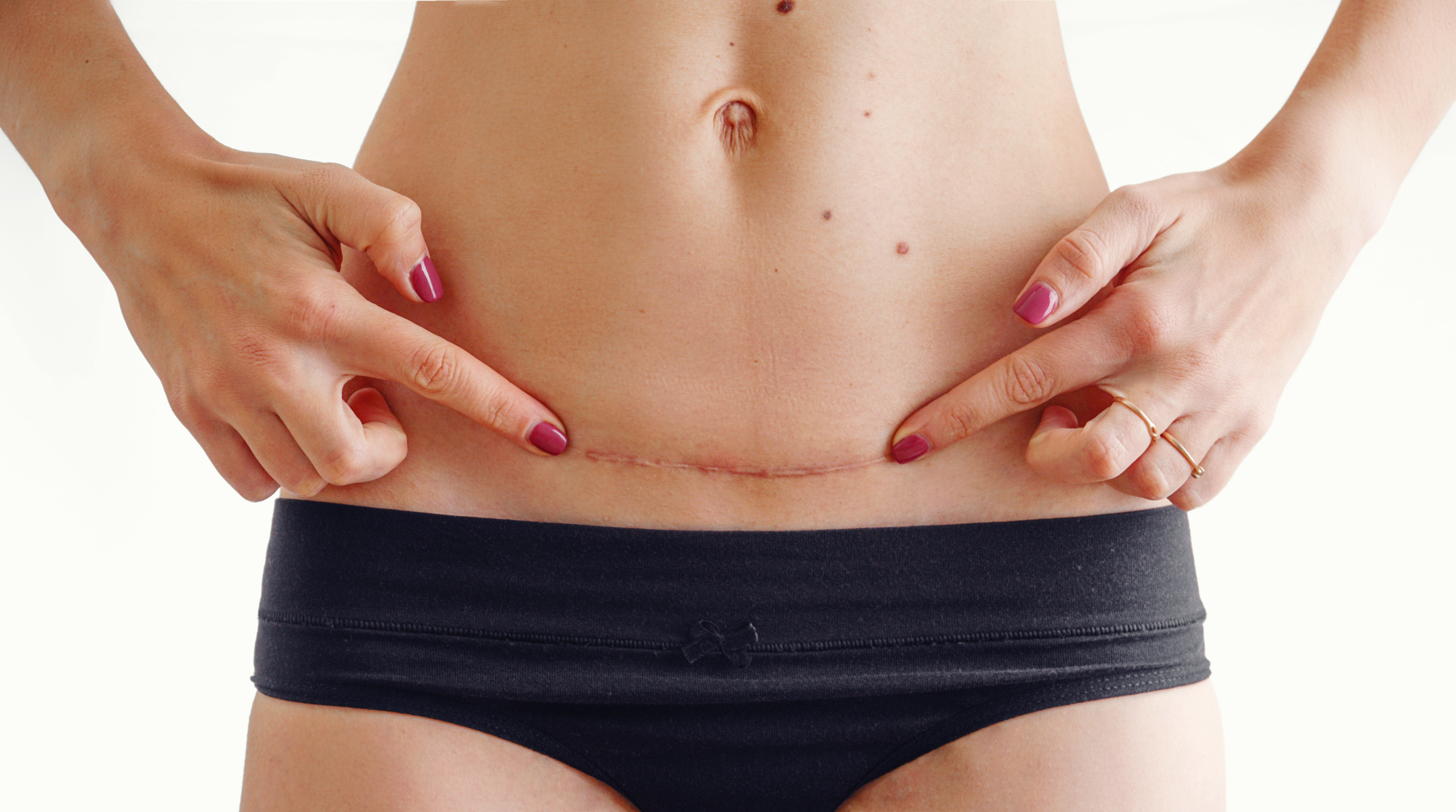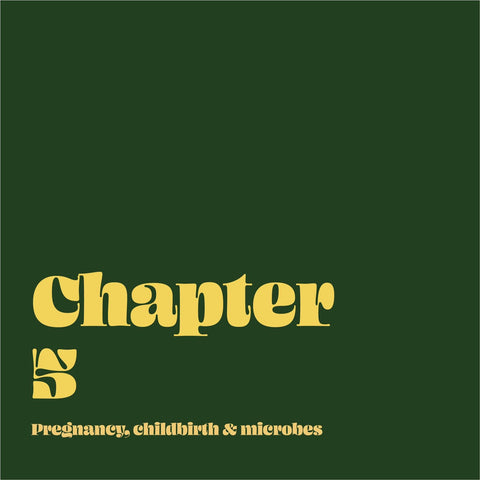Childbirth & the microbiome – “What every becoming mother should know”
Microbes during “Natural Birth”
Microbes during “Natural Birth”
In the first few hours of a child’s life, microbes play a very significant role. From bathing in the mother’s warm secure womb, a sack of amniotic fluid inside the uterus, the baby is protected from the microbes of the outside world.
Once the membranes rupture (aka the water breaks) the colonization begins! In general, *, most of the microbes the baby encounters are not antagonists, but friends. It’s a ride coating the previously sterile baby in a smear of vaginal microbes.
‘When the cervix is completely open and the baby’s head is deep enough in the birthing channel for the mom to start pushing, the baby’s journey through the mom’s vagina starts. This process takes on average 20-60 minutes during which the baby gets it’s first full exposure to the mom’s microbiome. Hard work for mom, but an important time for the baby’s immune system to get used to the outside world’s bacteria!’

Our good old friends Lactic Acid Bacteria
So, we basically all start off with mums’ bacteria, which are there to protect us and help us building our immune system, breaking down proteins and enzymes etc. The most densely populated areas in the body are the mouth, vagina and the intestine, populated by a high density of Lactobacilli and Prevotella.
Where there are Lactobacillus, the environment gets acid which makes it a hostile milieu for many other bacteria, especially pathogenic bacteria as Streptococcus, Clostridium difficilae, or Pseudomonas. The Lactobacillus species simply crowds them out and next to that, produces antibiotics of their own (called bacteriocins).
In a healthy vagina certain family member of Lactobacillus are the dominating bacteria. They convert sugar into lactic acid, creating an acid environment which makes it difficult to impossible for hostile bacteria to survive or grow in this area. Furthermore, these Lactobacillae have a feature that breaks down hostile bacteria, called bacteriocides. This makes it a safe environment for the baby to slowly travel through during the last moments in it’s mom’s body and to get in contact with healthy bacteria.
A mother’s gift (natural birth)
Thus, the microbiota begins with a simple selection of lactic acid bacteria, partially transferred by the mother onto the child. These bacteria play a role in cultivating the baby´s metabolism and educating the immune system. Thanks mum! After a few months, the child’s microbiota grows in diversity and complexity – ecological succession.

But what about the millions of babies who come to life each year, without going anywhere near their mother’s vagina?
Here comes the C-Section
But what about the millions of babies who come to life each year, without going anywhere near their mother’s vagina?
The Caesarean sections have been used for centuries, especially in the 19th century to save a stuck child from dying. In the last century though, with enhanced surgical techniques and anesthetics, we managed to not only save child but mother as well.
C-sections are a crucial alternative to vaginal delivery in certain medical circumstances – some women have no choice but to give birth this way. Since the 70´s we see an upward trend in C-sections across many countries around the world. The WHO estimates that the optimal rate of C-Sections should lie around 10-15% of all births. The Netherlands are in line with the current rates and also leader in natural house birth giving in the Western world (A. Collen, 2015).
Globally though, we see the number of C-sections go up. In some hospitals in Brazil, for example, the number is up to 90%. In the US, the number is up to 70%. And Brazil and the US are not alone in this. In Argentina, Iran, Mexico, Cuba, and in many parts of our Western World, hospitals are specializing on giving birth via C-section as the “fast and safe way out” (F.Magne et all, 2017).
Why the increase in C-section births?
It seems that giving birth naturally is considered too time-consuming and unpredictable for many health care facilities around the world. Another reason is also the huge increase in lawsuits in many parts of the world after babies have been born with cerebral palsy which is preventable by doing a planned caesarean section.
C-sections and the development of the babies microbiome
Caesarean born infants have shown a more slowly diversifying microbiota, with differences reported from normally born infants. (Salminen, 2004).
In the early days, C-section babies are more susceptible to infection (up to 80% of MRSA infections in infants occur in those born via C-section) (A. Collen, 2015).
In general thought, no statement in terms of weather C-Section born babies compared to vaginal birth are “less healthy” in later life can be made. This field of study is too young to draw long-term conclusions and results of longer-term studies such as the largest ever study of the newborn microbiome conducted in the UK at the Wellcome Sanger Institute in Hinxton do need more time to be published.

What about other ways of giving the first gift to your baby?
Vaginal Seeding
There is plenty emerging research on how exactly these differences in the gut microbiota translate into the health consequences associated with C-sections. For example, trials have been conducted where the vaginal bacteria are rubbed first into the babies’ mouth, then across its face and body after giving birth via C-section. “The idea of putting undefined microbes in children that are immunologically underdeveloped is very risky,” says Lawley from the UK study in Hinxton. “Our data does not that support that. It makes me very nervous.”

Opinions on C-section
The trend to switch to the fast delivery method C-section only for convenience, financial, or cosmetic reasons is noticeable, but definitely not a positive trend. There are cases where a C-section is definitely needed and should be applied, as long as mothers have a choice, they should have the right to choose themselves.
Ongoing research continues to confirm that the protection layer, given to the child by its mother via vaginal birth, plays a significant role in early life development. So, to not blame one delivery method or the other, research should focus on the early life microbes, what they mean to child development, and how to make information on that more transparently available for becoming mothers.

What can you do as a mother?
We have one immediately available possibility to ensure our children with a healthy microbiome by taking care of our own bacterial diversity, especially during pregnancy and while feeding breast milk.
As a mother, a diet rich in “cultured food that is alive”, pro- and prebiotics (no antibiotics), plant fibres (e.g. retrieved form onions, garlic, leek, asparagus, cabbage, bananas, green vegetables etc.) is recommended.
Furthermore, a low-stress lifestyle, and keeping the immune system upright contribute to a healthy gut-microbiome. Ultimately, carefully choosing the way you’d like your child to see the light on this wonderful planet for the first time, is what you can take control of (mostly).

More?
If you want to read more about How to support your Gut-Microbiome with food, movement and stress relief check out the previous chapter of the Gut-Mind journal.
Terminology:
Microbiome: a community of microorganisms (such as bacteria, fungi, and viruses) that inhabit a particular environment and especially the collection of microorganisms living in or on the human body. Your body is home to about 100 trillion bacteria and other microbes, collectively known as your microbiome.
Bacteria: Plural of Bacterium. Microscopic single-celled organisms lacking a distinct nucleus are known as bacteria. They may be shaped like spheres, rods, or spirals. They inhabit virtually all environments, including soil, water, organic matter, and the bodies of animals
Lactobacilea: there are >150 different spiecies of Lactobacillae. The ones in the vagina are different from the ones in de gut. L. Crispatus and L. Jensenii are most prevalent in the vagina. They adhere strongly to the vaginal epithelium, produce lactic acid, surfactant and bacteriocines. They convert sugar in to lactic acid. Bacteria like C diff rarely to never occur in the vagina.
Part 1 *
*because 1 in 5 women carries group B streptococcus in their vagina, and if the baby gets colonized and infected, it is likely to die within 48 hours. Women are tested at 36 weeks of pregnancy for this bacteria and offered antibiotics during labor if they carry the bacteria.
References:
- Alanna Collen (2015). 10% Human: How Your Body's Microbes Hold the Key to Health and Happiness. HarperCollins
-
Lisa F. Stinson,Matthew S. Payne, and Jeffrey A. Keelan (2018). A Critical Review of the Bacterial Baptism Hypothesis and the Impact of Cesarean Delivery on the Infant Microbiome. Frontiers in medicine. Doi: 10.3389/fmed.2018.00135
- Cukrowska B, Bierła JB, Zakrzewska M, Klukowski M, Maciorkowska E. The Relationship between the Infant Gut Microbiota and Allergy. The Role of Bifidobacterium breve and Prebiotic Oligosaccharides in the Activation of Anti-Allergic Mechanisms in Early Life. Nutrients. 2020;12(4):946. Published 2020 Mar 29. doi:10.3390/nu12040946
- Magne Fabien, Puchi Silva Alexa, Carvajal Bielka, Gotteland Martin (2017). The Elevated Rate of Cesarean Section and Its Contribution to Non-Communicable Chronic Diseases in Latin America: The Growing Involvement of the Microbiota. https://doi.org/10.3389/fped.2017.00192
- Mayer, E. (2018). The mind-gut connection: how the hidden conversation within our bodies impacts our mood, our choices, and our overall health. HarperCollins.
- Pia Huber (2020). Interview with Midwife from South-Germany. Co-Founder of Natural Birth House in Aichach.
-
Sara Allin, Michael Baker, Maripier Isabelle, Mark Stabile (2019). Accounting for the Rise in C-sections: Evidence from Population Level Data. NBER Working Paper No. 21022
- Salminen S, Gibson GR, McCartney AL, Isolauri E. Influence of mode of delivery on gut microbiota composition in seven year old children. Gut. 2004;53(9):1388-1389. doi:10.1136/gut.2004.041640
